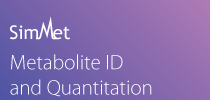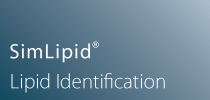References >> Glycobiology
GlycobiologyGlycobiology is fast emerging as a primary field of interest for biomolecular and biomedical research around the globe. Once considered merely supporting structures, the sugars have now been widely recognized to be a vital components in running the complex machinery of life itself.
The buzz words today are LC-Q ion-trap, hybrid quadrapole time-of-flight mass spectrometer, ID PFG equipped NMR spectrometers, TOF/TOF, Qq-FTMS and informatics resources such as CCSD, KEGG - encyclopedia of metabolism and pathways, SimGlycan® - high-throughput fragment finger-printing program, and structure predicting tools like GlycoMod, GlycoFragment etc.
So what is glycobiology all about? It involves the study of everything related to the structure, bio-synthesis, and biology of sugars and saccharides drawing from simple organic chemistry, molecular and cellular biology, enzymology and allied domains. Sugars control and influence almost every aspect of the cellular processes ranging from cell-cell interactions, energy intermediates, adhesion mechanisms, growth factor signaling, blood clotting, receptor binding, regulating the activity of hormones in the blood, directing embryonic development, and serving structural roles. In this new light, the role of sugars is being reconsidered with a new zeal to understand the working of the intricate processes of life.
The Carbohydrate Involvement
Before sugars actually came into the limelight, it was commonly thought that biological information, started from DNA and was ultimately translated into proteins which controlled virtually everything running in and around the cell. But now it has been demonstrated beyond doubt that simple sugars have their own complex language, perhaps more complex than those of proteins and DNA. The molecules continuously steer and guide many activities relevant to the proper functioning of a cell. In fact, many proteins undergo post-translational modifications to form conjugated molecules with sugar to function properly.
One of the most important reasons why the progress and enthusiasm in carbohydrate research languished compared to those of other major macromolecules, mostly lies within the sugars themselves.
Carbohydrates are structurally quite complex. Their complexity can rival the size and complexity of DNA and proteins. Furthermore, their complexity goes on increasing as they come together to form a gamut of homo and hetero polymeric compounds inside the cell, controlling and influencing a wide array of mechanics.
Current Glycomics Trends
However, over the last few decades new technologies have been developed which have proven very powerful in exploring the structures of carbohydrate chains. As a result, they have opened up a new frontier for glycan and glycopeptide analysis giving rise to a whole new field of research opportunities called "Glycobiology" in the process.
The word "Glycobiology" was first coined by Prof. Raymond A Dwek, the head of the Oxford Glycobiology Institute. Glycobiology is now common parlance in research literature and discussion forums. Dr. Ajit Varki, a well know scientist in glycobiology research, writes in the text "Essentials of Glycobiology", that glycobiology is the "coming together of the traditional disciplines of carbohydrate chemistry and biochemistry with modern understanding of the cellular and molecular biology of glycans."
The Scope of Glycomics Research
Today we understand beyond doubt that the sugar molecules are not mere decorative elements serving simply structural and energy requirements in a cell. It is clear that their involvement in the intricate design of life is far more crucial than that understood a few years ago.
Glycans are are at the center of many disorders and diseases sparking the possibility of exploiting them for therapeutic and diagnostic purposes. There are many biochemical pathways and diseases in which glycans are intricately involved. There are many ways in which sugars may affect physiological conditions.
What is not yet clear, and is a subject of great deal of research, is how many of the possible structures that can be predicted by permutation and combination actually exist in nature. It seems that we have just stepped upon the wide open field of sugars and there is much running around to do before we get to some serious work.
Analysis of Complex Glycan and Glycopeptide Structures
One of the important frontiers in glycobiology research is the quest to decipher the glycome. The glycome refers to the current sugar population pattern in the cell, which can be in free or in conjugated forms such as glycoproteins, glycolipids etc. It is not the same when temporally observed, changing continuously from time to time, making it all the more challenging.
A complete, functional glycan is quite complex. Unlike that of proteins whose composition can be derived from the genetic code, the structure and conformation of glycans cannot be predicted easily. This makes it all the more challenging to study how exactly their production takes place and is regulated. However, solving this problem would be of immense benefit for biomedical research.
Another interesting aspect of glycan research is analyzing the biological importance of protein glycosylation. More than half of the proteins found in the human body have sugars conjugated to them. The process has to be thoroughly understood to determine the specific structures of N- and O-linked carbohydrates.
Gaging the vast potential and the promise that glycobiology holds, many pharma and biotech companies have already started allocating their R&D budget to it. Presently, with our drug arsenal fast depleting against drug resistant and mutant pathogens, glycomics hold an untapped source of new candidate drugs.
To put it briefly, the scope of glycobiology research and the expected possibilities are immense. The progress of the research banks much on the technological advances that can be adopted easily and widely across various fields and platforms.
A Helping Hand
New technologies are fast overcoming the hurdles involved in glycomics research. The carbohydrate microarray, for example, is a novel technique that allows high throughput screening and analysis of protein-glycan interactions. Just like DNA microarrays, it contains several spots, each accommodating a specific glycan molecule. Being a high throughput technology, carbohydrate microarrays promise to be particularly valuable in understanding how protein glycosylation of a cell changes during differentiation and activation.
NMR Spectroscopy has provided considerable thrust in the structural analysis of glycans. The technique has helped in characterizing oligosaccharides, including monosaccharide stereochemistry, anomeric configuration, the linkage type and the complete sugar sequence. It is a great help in obtaining 1H-NMR data of complex carbohydrates. The relatively large sample size required to get good structural data is one issue with NMR spectroscopy. However, automated carbohydrate synthesis techniques can now produce the necessary amounts of pure oligosaccharides required for such projects.
The identification of non-carbohydrate entities in carbohydrate chains is another difficult problem; more so if when they are located at several different positions in the chain. But this problem can be addressed by applying methods such as mass spectrometry.
Enter Mass Spectrometry
Advancements in mass spectrometry have overcome many difficulties in carbohydrate analysis, providing the means for studying them without chemical modifications. It allows rapid and accurate detection, and identifies even small quantities of sugar samples. Furthermore, these accurate machines coupled with advanced data analysis and fingerprinting programs can accurately determine the structure of complex glycan molecules.
Based on three principal units that mass spectrometers use, that is the ionizer, analyzer and detector, there are several different types of instruments that are in the market today. However, the basic principle remains the same, which is the separation of the molecular fragments in electrical and/or magnetic field based on their mass to charge ratio. Fast Atom Bombardment (FAB) mass spectrometers, one type of mass spectrometer setup, is a powerful tool for characterizing the complex carbohydrates. It has played a major role in biopolymer analysis.
The sensitivity of this type of instrumentation has been significantly improved by array detector technology and new mass spectrometers. Some common mass spectrometer configurations available in the market include MALDI-TOF, MALDI-TOF/TOF, Qq-FTMS, ESI-Ion Trap, ESI-LC/TOF, Fleet Ion Trap LC/MS, Orbitrap Hybrid MS and ESI-Q-q-TOF systems. In all these machines, the components change the way in which compounds are dissociated.
Another technique that serves as a complement to mass spectrometry in accurately determining the mass is analytical chromatography. High Pressure Liquid Chromatography (HPLC) and Gas Chromatography (GC) are particularly useful for glycans. These techniques resolve mixtures of compounds in a sample based on the chromatographic compound separation principle before introduction into the ionization unit of the mass spectrometer.
Although we now have a few powerful technologies at our disposal, the data generated needs to be analyzed and matched against databases of known glycans. That is where bioinformatics comes in.
SimGlycan® is one such bioinformatics tool. It automatically identifies glycans from MS profiles. Complete information for each structure including glycan class, reaction, pathway and enzyme is provided.
For details, please visit: www.premierbiosoft.com/glycan/index.html






